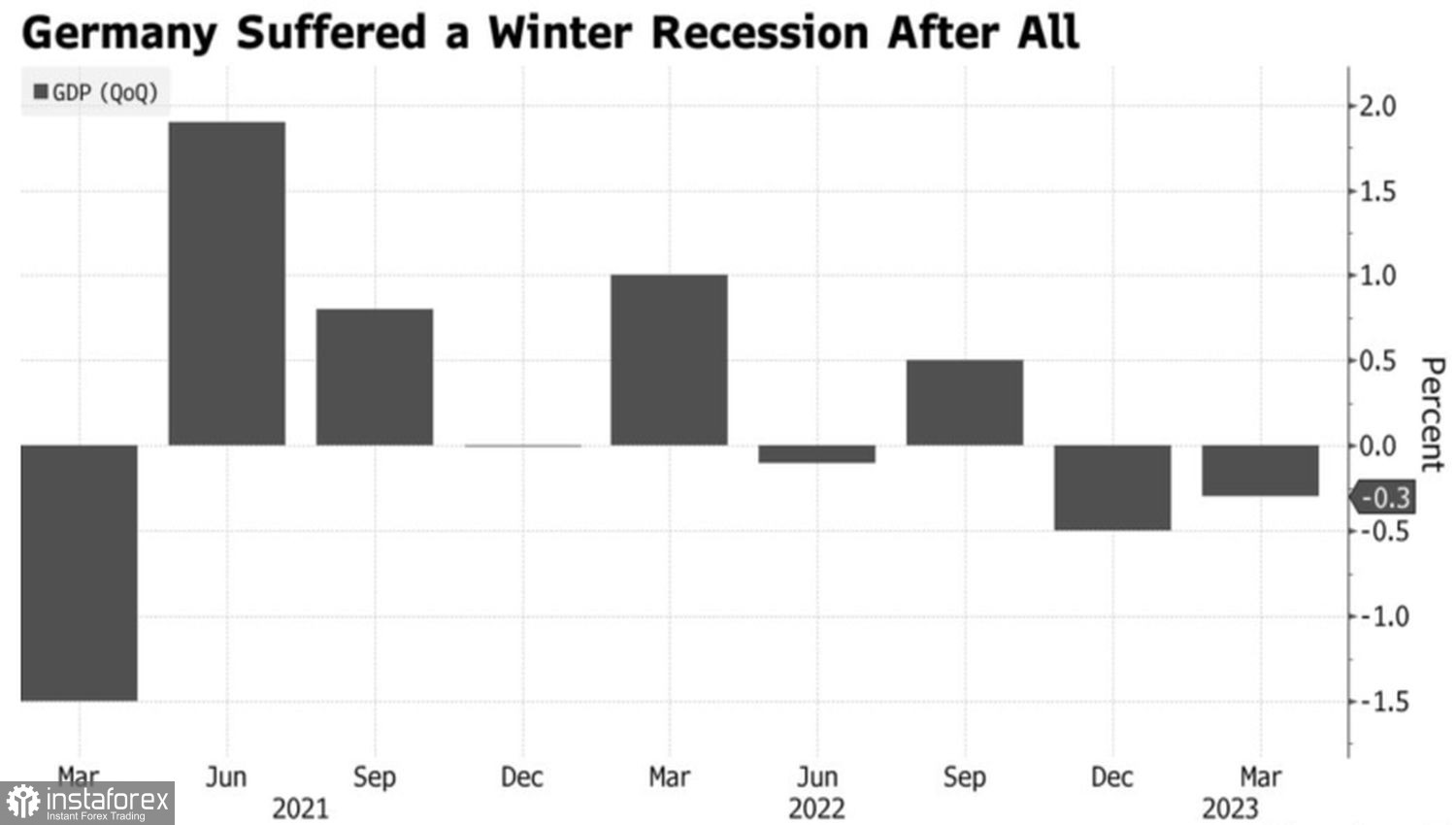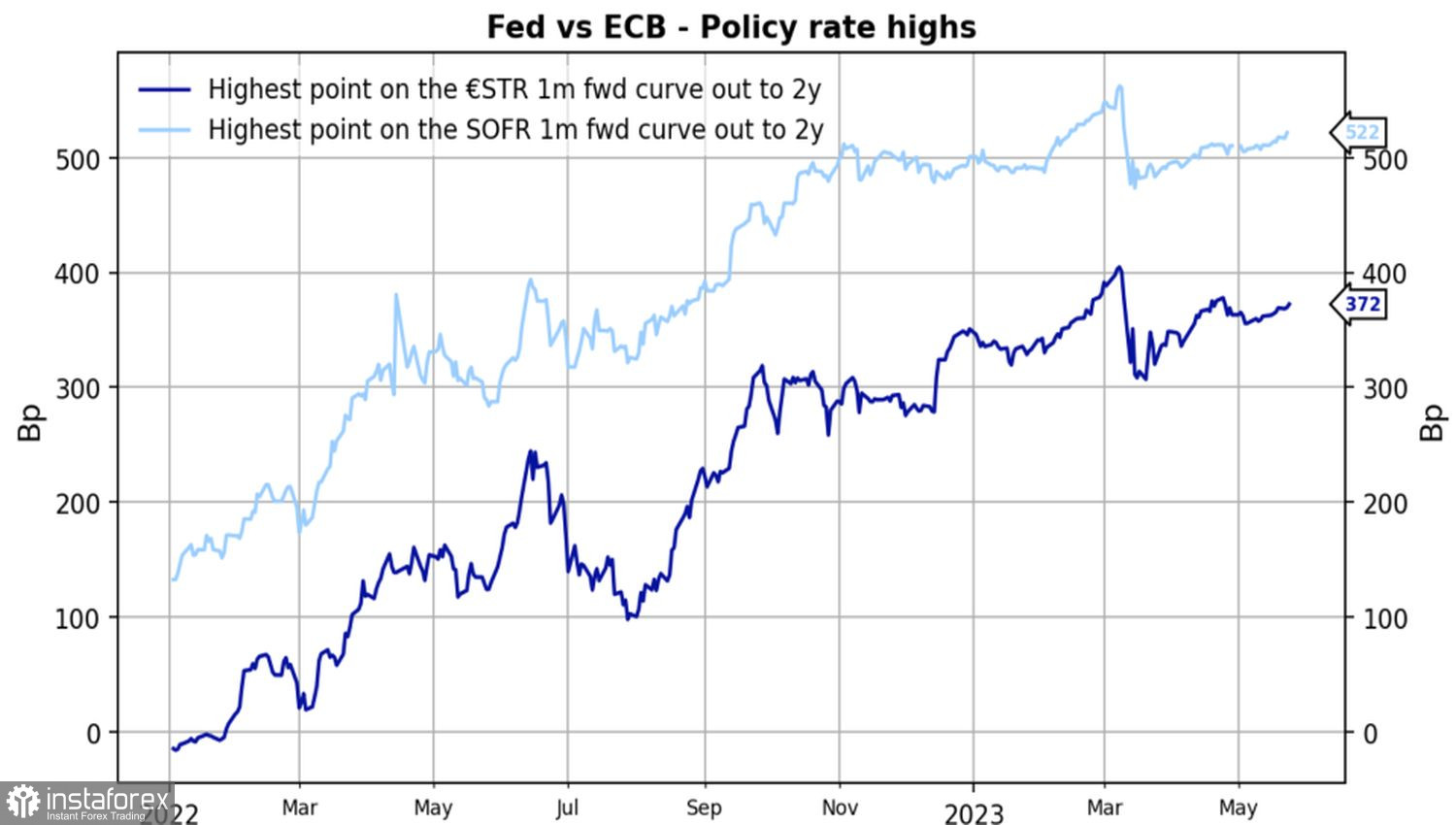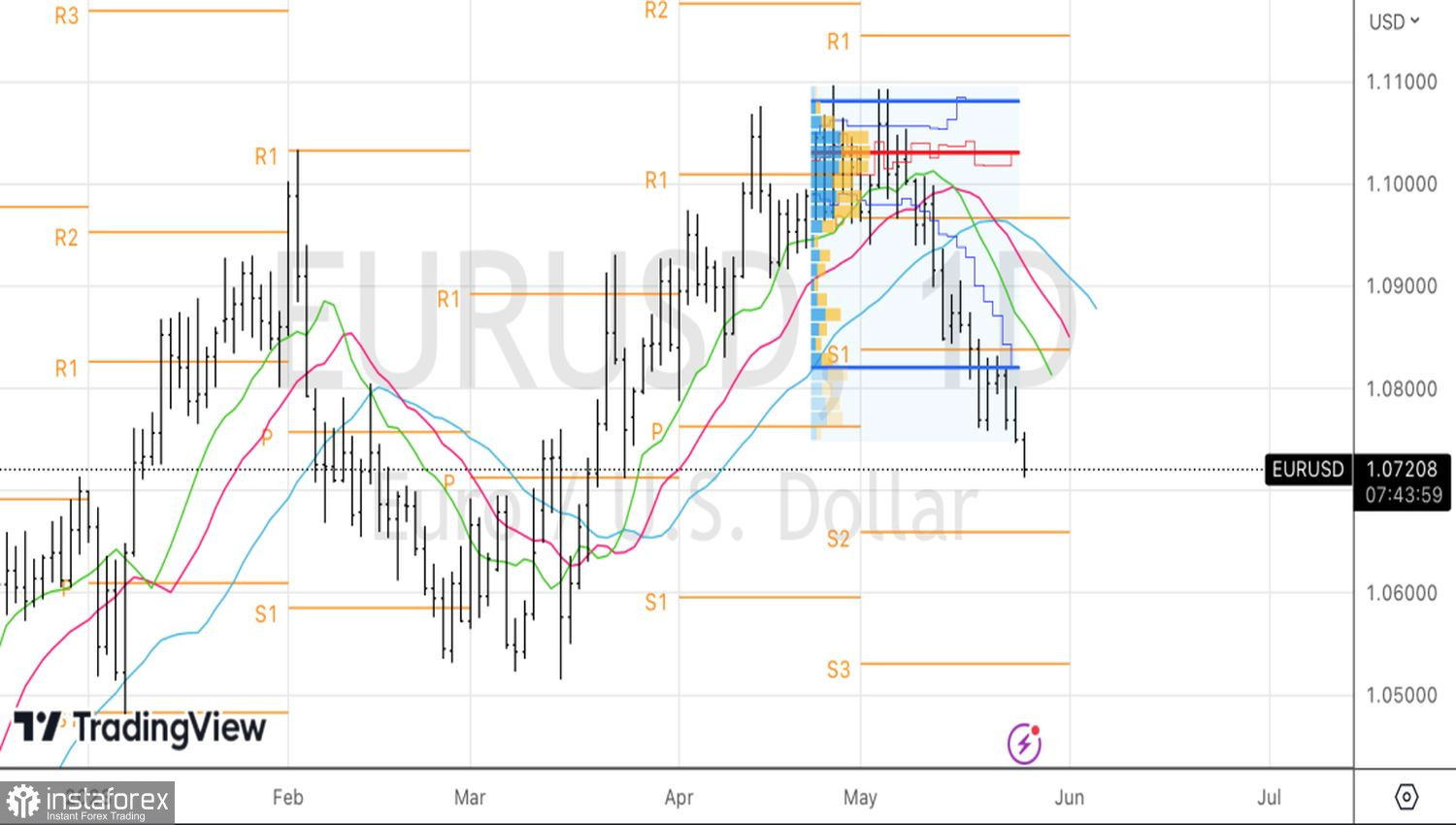Back in January, the German government ruled out the possibility of a recession, but the fall in German GDP increases the threat of recession. Weak consumer activity and cuts in government spending led to a 0.3% decrease in German GDP in the first quarter. With a 0.5% decrease from October to December, the first recession since the end of the pandemic has arrived. This circumstance has dealt a heavy blow to EUR/USD.
Initially, there was talk of stagnation, but now it is a decline. Moreover, the scale of the revision was so significant that it increases the risks of the entire currency bloc sliding into a recession. Just as the market began to discuss the possibility of avoiding a decline in European GDP, a dark streak arrived.
Germany's economic dynamics

Trouble doesn't come alone. The collapse of European PMIs and the unpleasant surprise of German GDP are just one side of the coin. The other side is in Asia. According to the latest data, it is unlikely that China's economy will grow significantly above the official target of 5% in 2023. And many investors, especially fans of EUR/USD, were hoping for more. They wanted China to become the locomotive of the global economy after coming out of lockdowns and to help the export-oriented eurozone.
Thus, the rapidly increasing risks of a recession in the bloc and China's sluggish recovery put an end to the attempts of the main currency pair to bring back the uptrend. Especially considering the weakness of the European economy, it is unlikely that the European Central Bank will decide to raise the deposit rate above the market's expected 3.75%.
Market expectations for ECB and Fed interest rates dynamics

As for the market's forecasts for the Fed's policy rate ceiling at 5.25%, USD supporters are not afraid of this. Morgan Stanley notes that the US dollar typically rises after the end of a monetary tightening cycle and recommends its clients to open short positions on EUR/USD with 1.03 as the target.
It's not certain that the monetary tightening cycle is over. FOMC member Christopher Waller believes that even if borrowing costs do not rise in June, they will definitely increase during the remainder of the year. Derivatives assess the chances of a rate hike in July at 63%. The Fed is currently benefiting from taking a pause and assessing the consequences of its actions. If US macro data do not worsen, the Fed can go back to being aggressive.

Thus, disappointing data from major competitors of the US, such as the eurozone and China, the resilience of the American economy, and hints from Fed representatives that the rate hike cycle is not over, does not only create conditions for a correction, but also for breaking the uptrend in the main currency pair.
Technically, the pullback in EUR/USD is gaining momentum. The first target for shorts at 1.071 is within arm's reach. We continue to sell the euro towards the remaining two targets at $1.066 and $1.053.
 English
English 
 Русский
Русский Bahasa Indonesia
Bahasa Indonesia Bahasa Malay
Bahasa Malay ไทย
ไทย Español
Español Deutsch
Deutsch Български
Български Français
Français Tiếng Việt
Tiếng Việt 中文
中文 বাংলা
বাংলা हिन्दी
हिन्दी Čeština
Čeština Українська
Українська Română
Română

